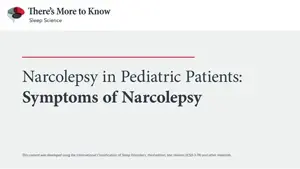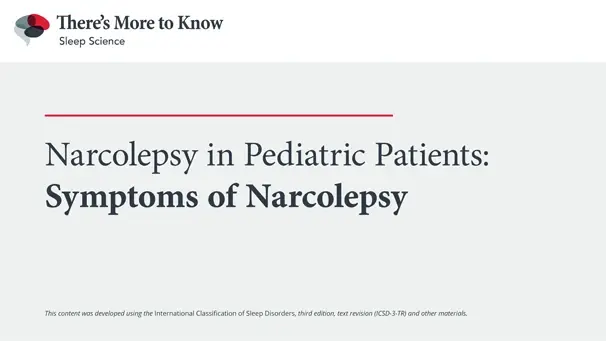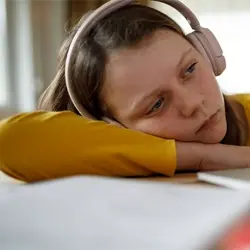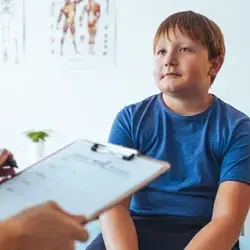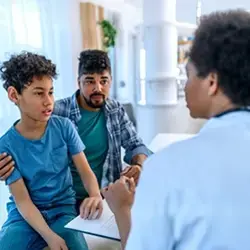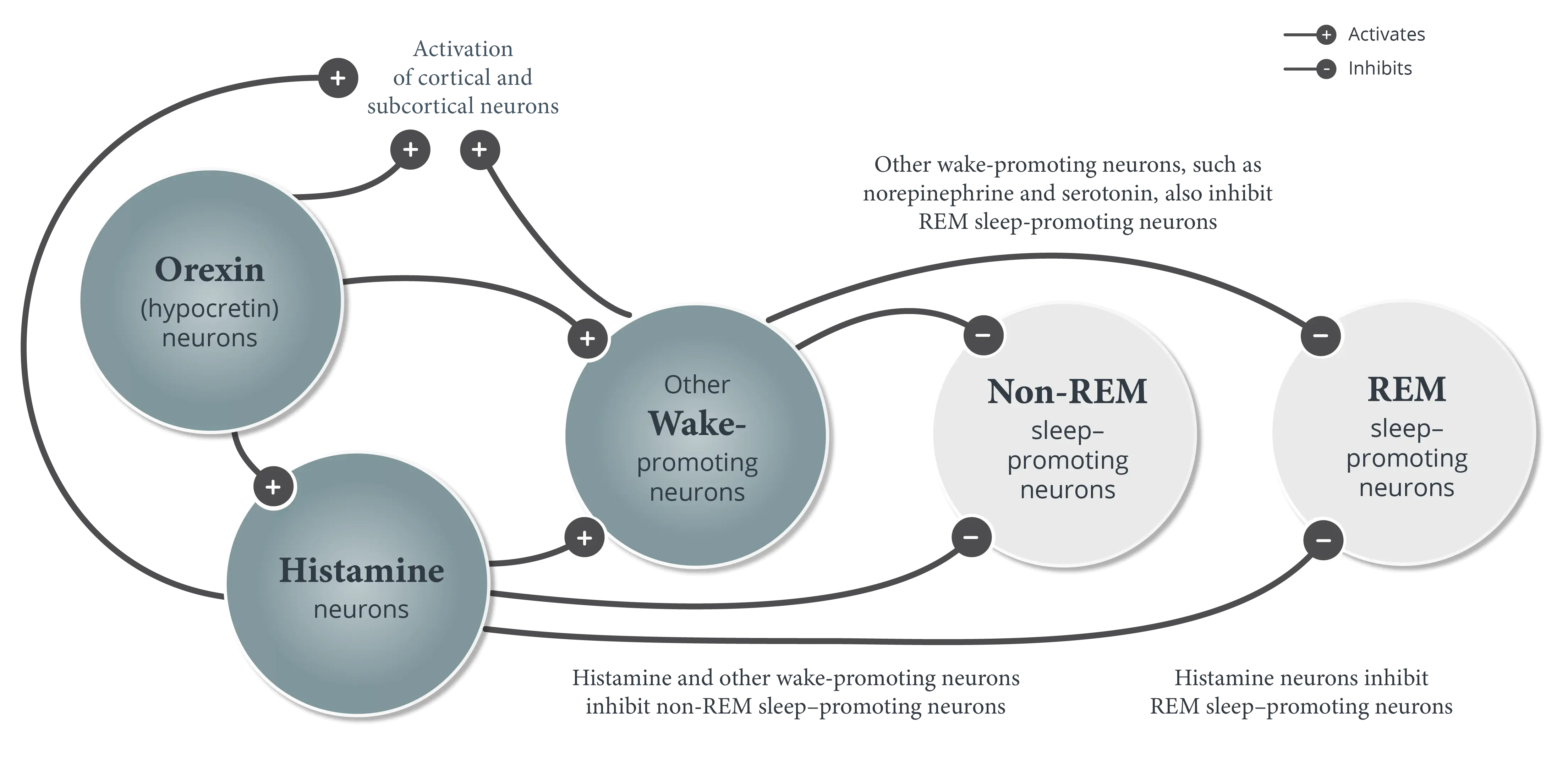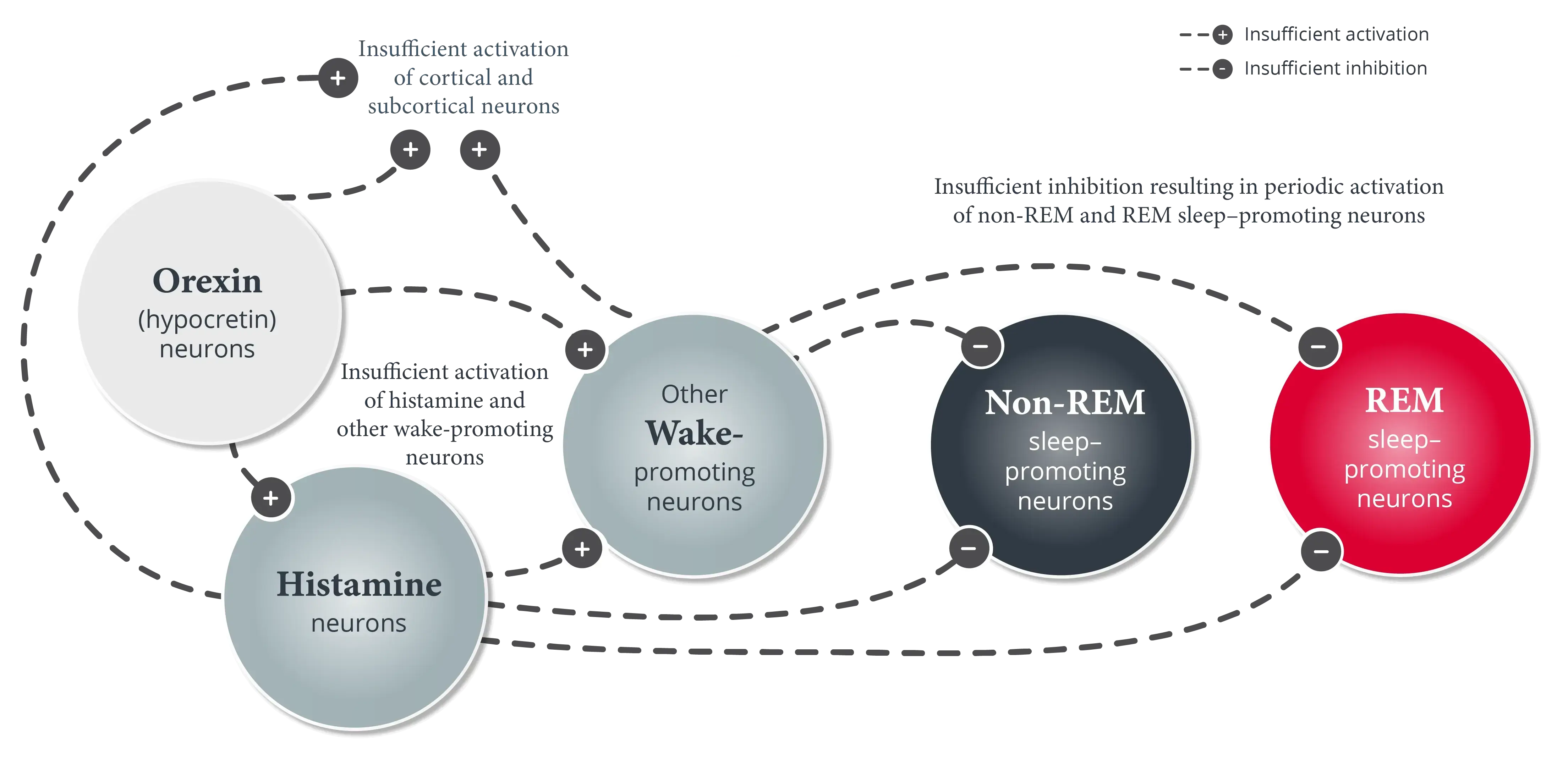

Symptoms of Narcolepsy in Pediatric Patients
This content was developed using the International Classification of Sleep Disorders, third edition, text revision (ICSD-3-TR) and other materials.
Symptoms of Narcolepsy in Pediatric Patients
This content was developed using the International Classification of Sleep Disorders, third edition, text revision (ICSD-3-TR) and other materials.
Overview
All pediatric patients with narcolepsy experience excessive daytime sleepiness (EDS), and approximately 70% to 80% experience cataplexy.1-3
Symptoms in Pediatric Patients downloadable presentation
Download this mini presentation for a summary of the symptoms of narcolepsy in pediatric patients.
All pediatric patients with narcolepsy have EDS, the inability to stay awake and alert during the day, resulting in periods of irrepressible need for sleep or unintended lapses into drowsiness or sleep.1
EDS is usually the first symptom of narcolepsy to occur and is often the most disabling, impacting the ability to function at school and in social situations.1,4
Cataplexy only occurs in the more common type of narcolepsy in pediatric patients—narcolepsy type 1—and is the most specific symptom of narcolepsy.1,2 It is a generally brief, usually bilaterally symmetrical, sudden loss of muscle tone with retained consciousness.1
Cataplexy is present in approximately 70% to 80% of pediatric patients with narcolepsy, and its onset can occur very close to disease onset.1-3 Other, nonspecific symptoms, such as disrupted nighttime sleep and other symptoms of REM sleep dissociation (eg, sleep paralysis, hypnagogic/hypnopompic hallucinations) may also be present.1,2
Some patients have vivid, dreamlike experiences during the transition from wake to sleep (hypnagogic hallucinations) or during the transition from sleep to wake (hypnopompic hallucinations).1 These hallucinations can have visual, auditory, and tactical characteristics and may be very disturbing.1,3
Sleep paralysis describes the temporary inability to move, open the eyes, or speak at sleep-wake transitions despite being awake; these can last several minutes and be very distressing.1,3
Hypnagogic hallucinations and sleep paralysis sometimes occur together and can be difficult to confirm, depending on the verbal ability of the patient.1 Additionally, pediatric patients may not report longer-than-normal time to sleep onset but may have difficulty maintaining continuous sleep at night.1,3
These characteristics are discussed in more detail on the Symptom Manifestations page.
References
- American Academy of Sleep Medicine. International Classification of Sleep Disorders. 3rd ed, text revision. American Academy of Sleep Medicine; 2023.
- Maski K, Kotagal S. Clinical features and diagnosis of narcolepsy in children. Clinical Decision Support | UpToDate | Wolters Kluwer. Updated July 29, 2024. Accessed January 6, 2025. https://www.uptodate.com/contents/clinical-features-and-diagnosis-of-narcolepsy-in-children
- Chung I-H, Chin W-C, Huang Y-S, Wang C-H. Pediatric narcolepsy–a practical review. Children (Basel). 2022;9(7):974. doi:10.3390/children9070974
- Plazzi G, Clawges HM, Owens JA. Clinical characteristics and burden of illness in pediatric patients with narcolepsy. Pediatr Neurol. 2018;85:21-32.

